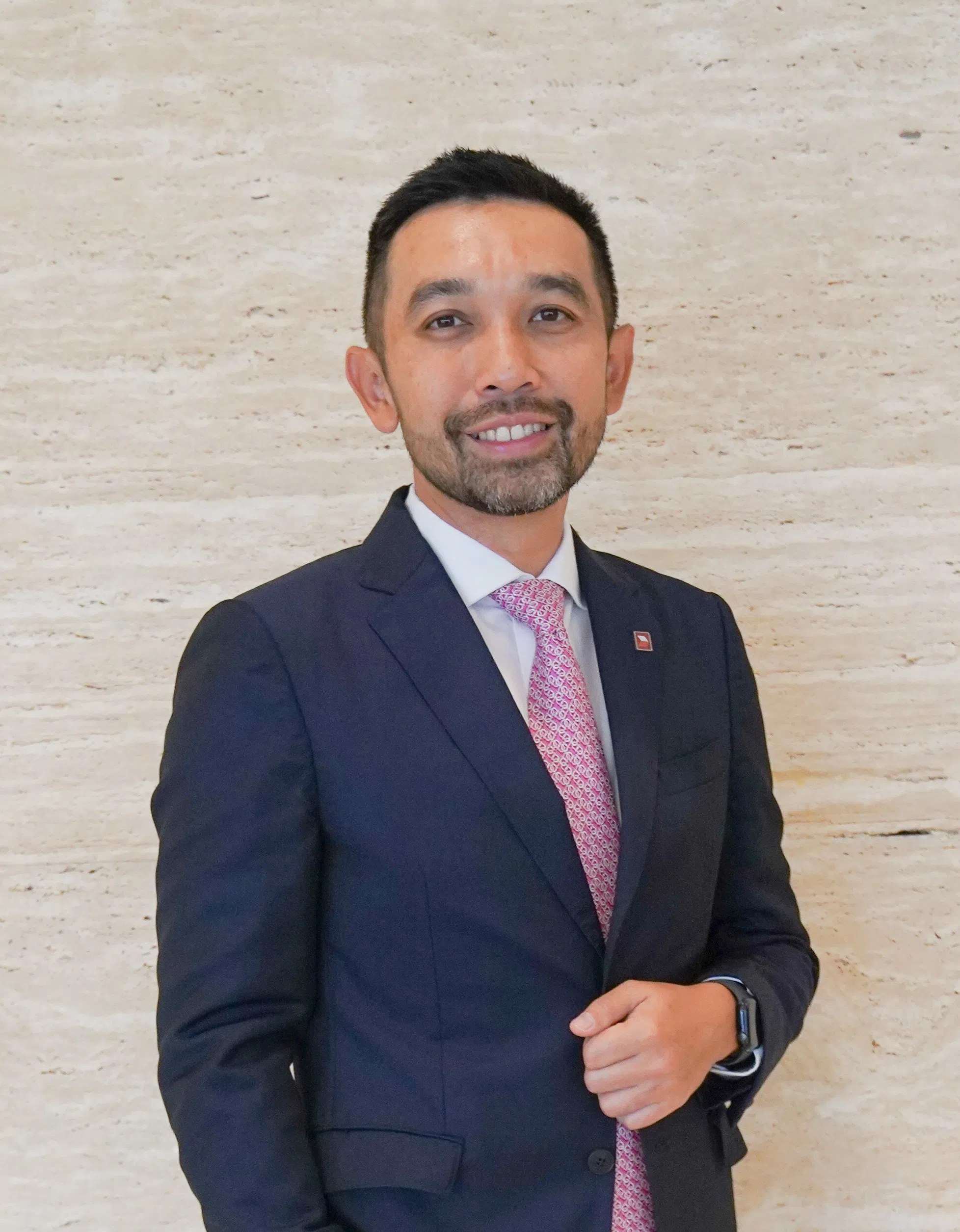[KUALA LUMPUR] Malaysia’s second-largest lender CIMB is moving its growth engine beyond home turf, ramping up in Indonesia and Singapore – two markets that now account for nearly 40 per cent of group earnings – as it chases gains in Islamic finance, corporate banking and wealth management, said its top executive.
The move is part of a strategic pivot by the bank’s group CEO Novan Amirudin, who is steering the bank with total assets of RM755 billion (S$229 billion) towards higher-yield markets with capital optimisation.
“We have scale in the Asean region and will continue to play in all three segments – consumer, wholesale and commercial. The question lies on which part of the cycle we are in, where do we continue to double down and allocate more capital, and where should we hold back,” he told The Business Times in a recent interview.
Collectively, both markets contributed 38 per cent to CIMB’s earnings in FY2024, up from 37 per cent the year before.
A NEWSLETTER FOR YOU
Friday, 8.30 am
Asean Business
Business insights centering on South-east Asia’s fast-growing economies.
As Malaysia’s share of earnings dipped to 57 per cent from 60 per cent the previous year, CIMB – South-east Asia’s fifth-largest lender by assets – is accelerating cross-border growth.
Malaysia remains the bank’s cornerstone market, absorbing 54 per cent of the group’s capital and delivering an 11 per cent return on equity.
It also has presence in Thailand and Cambodia.
As at end-2024, CIMB operates 592 retail branches and employs more than 33,000 staff across 10 markets, serving around 28 million customers.
The new chief and his strategy

Novan, 45, took the helm as group chief executive in July 2024, after serving as co-CEO of group wholesale banking and CEO of CIMB Investment Bank.
A chartered accountant, he began his career at PwC before spending 16 years at JPMorgan Chase, where he led South-east Asia equity capital markets and Malaysia investment banking.
Since joining CIMB in 2022, Novan has led a series of strategic shifts that have kept the bank’s performance on a steady climb – net profit rose 10 per cent to RM7.7 billion in FY2024, while revenue grew 6.2 per cent to RM22.3 billion.
Indonesia: Scaling up Islamic banking
Its Indonesian arm, Bank CIMB Niaga, is currently the country’s seventh-largest lender by assets, with 360.2 trillion rupiah (S$29.1 billion) as at end-2024.
The lender aims to make Bank CIMB Niaga the most profitable lender in the KBMI 3 category, which refers to banks with core capital between 14 trillion and 70 trillion rupiah.
Novan said that CIMB is strategically targeting the burgeoning Islamic banking sector in Indonesia. “CIMB Niaga is now the No 2 syariah bank in Indonesia, after Bank Syariah Indonesia. We aim to replicate the success in growing Islamic banking in Malaysia to Indonesia,” he added.
“Despite being the world’s most populous Muslim nation, only 8 per cent of banking assets in Indonesia are Islamic, compared to around 50 per cent in Malaysia,” he noted, emphasising the vast opportunity for growth.
Singapore: Expanding as a “challenger bank”

In Singapore, CIMB is positioning itself as a leading challenger bank, focusing on Asean corporate banking and wealth management.
Victor Lee, CEO of growth markets and CIMB Singapore, said that new account opening grew at 15 per cent compound annual growth rate post-pandemic, with Malaysians accounting for more than 40 per cent of new accounts opened in 2024.
He added: “We’ve built strong links – Malaysians in Singapore can open an account in three minutes, borrow under Malaysian credit policies, and even get credit cards as foreigners.”
Despite having just one branch, CIMB Singapore serves half a million customers and is seeing rising demand from small and medium-sized enterprises (SMEs) expanding into Malaysia.
To enhance cross-border banking, it is exploring a new branch near the upcoming Johor Bahru–Singapore Rapid Transit System station.
“The growing Singapore dollar and ringgit transactions present an opportunity,” he noted. “We aim to capitalise by offering competitive forex rates and expanding our preferred and private banking services.”
Navigating global uncertainties

Beyond its core markets, Novan sees long-term potential in the Philippines and Vietnam, both fast-growing frontier markets with untapped opportunities.
Cambodia, though a smaller market, offers an avenue to attract premium clients through CIMB’s strong brand positioning.
Novan believes that rising geopolitical tensions and the new world order on trade will drive deeper Asean collaboration and intra-regional investments.
He cited the Johor-Singapore Special Economic Zone as a key catalyst for regional growth.
“As each Asean nation finds its new sweet spot amid evolving trade dynamics and supply chain shifts, banks with a strong regional presence are well-positioned to capitalise,” he explained, adding that for now the company’s six-year roadmap plan remains unchanged.
Six-year roadmap: Forward 30
In March, Novan unveiled Forward 30 (F30), a six-year roadmap designed to accelerate expansion and enhance profitability by 2030.
By 2030, the bank aims to achieve a top-quartile return on equity compared to its regional peers.
He said that this top quartile is defined as the weighted average return on equity of peer banks in CIMB’s core markets, currently around 13 per cent.
The bank’s near-term target is a 12 to 13 per cent return on equity by 2027, an increase from the present 11.2 per cent.
Notably, the lender’s return on equity grew from 9 per cent pre-pandemic to 11.2 per cent over a five-year period under the leadership of former CEO Abdul Rahman Ahmad.
Other key goals including securing a top three ranking in net promoter score (a measure of customer satisfaction and loyalty), increasing client franchise cross-sell to 75 per cent (from the current 65 per cent) and bringing the cost-to-income ratio to the low 40 per cent range.
Credit costs are expected to normalise to 40 to 50 basis points (bps), up from 25 bps in 2024. The bank is also looking at reducing its cost of funds by 10 to 20 bps.
Novan noted: “The roadmap ensures we remain nimble in navigating an increasingly complex operating environment while accelerating growth, where we already have a competitive edge.”
Analysts, while acknowledging CIMB’s growth potential, cautioned about macro risks and tighter liquidity.
Maybank Investment Bank analyst Desmond Ch’ng highlighted the lender’s exposure to domestic slowdowns and regional risks in Indonesia, Thailand and Singapore. He cautioned that further rate cuts in Indonesia could pressure margins, while a weaker rupiah may affect Bank CIMB Niaga’s earnings.
Hong Leong Investment Bank analyst Chan Jit Hoong expects the bank’s net interest margin to improve in early 2025 as Bank Indonesia’s rate cuts lower deposit costs.
Meanwhile, AmBank’s Kelvin Ong sees stronger return on equity from Singapore’s SME lending and wealth management. He expects better performance in Thailand post-commercial lending exit and a rebound in Indonesia and Singapore commercial banking.




